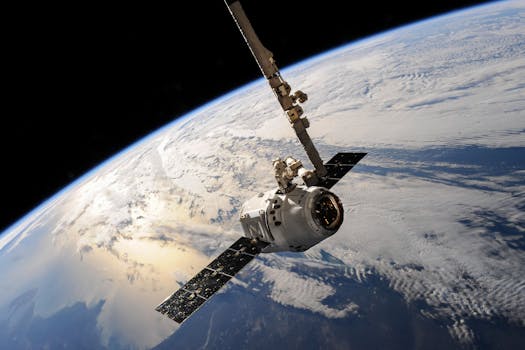The Future of Satellites: Revolutionizing Global Connectivity
The future of satellites is poised to revolutionize global connectivity, enabling faster and more reliable communication services. With advancements in space technology, satellites are becoming increasingly important for a wide range of applications, from navigation and communication to weather forecasting and Earth observation.

The Future of Satellites: Revolutionizing Global Connectivity
The future of satellites is poised to revolutionize global connectivity, enabling faster and more reliable communication services. With advancements in space technology, satellites are becoming increasingly important for a wide range of applications, from navigation and communication to weather forecasting and Earth observation. In this article, we will explore the current state of satellite technology, its future developments, and the potential impact on global connectivity.
Satellites have been in use for several decades, providing a wide range of services, including television broadcasting, telecommunications, and navigation. However, the advent of new space technologies has enabled the development of more advanced satellites, with higher bandwidth and faster data transfer rates. This has led to a significant increase in the use of satellites for a variety of applications, including broadband internet, mobile communications, and Earth observation.
Current State of Satellite Technology
The current state of satellite technology is characterized by the use of geostationary satellites, which are located in a fixed position above the Earth’s equator. These satellites have a wide range of applications, including television broadcasting, telecommunications, and weather forecasting. However, they have some limitations, such as high latency and limited bandwidth. To overcome these limitations, new technologies, such as low-Earth orbit (LEO) satellites and medium-Earth orbit (MEO) satellites, are being developed.
LEO satellites are located at an altitude of around 160 to 2,000 kilometers, which enables them to provide lower latency and higher bandwidth compared to geostationary satellites. MEO satellites, on the other hand, are located at an altitude of around 2,000 to 36,000 kilometers, which enables them to provide a balance between latency and bandwidth. These new technologies are expected to play a significant role in the future of satellites, enabling faster and more reliable communication services.
Future Developments in Satellite Technology
The future of satellite technology is expected to be characterized by significant advancements in areas, such as satellite design, propulsion systems, and communication technologies. One of the most significant developments is the use of small satellites, which are smaller and lighter than traditional satellites. These satellites are easier to launch and can provide a wide range of services, including Earth observation, communication, and navigation.
Another significant development is the use of reusable launch vehicles, which can significantly reduce the cost of launching satellites into space. This is expected to enable the launch of more satellites, which will provide a wide range of services, including broadband internet, mobile communications, and Earth observation. Additionally, the development of new communication technologies, such as laser communication, is expected to enable faster and more reliable communication services.
Potential Impact on Global Connectivity
The future of satellites is expected to have a significant impact on global connectivity, enabling faster and more reliable communication services. With the use of LEO and MEO satellites, latency is expected to be reduced, and bandwidth is expected to be increased, enabling the provision of high-speed internet and mobile communication services. This will have a significant impact on a wide range of industries, including education, healthcare, and finance, which rely on fast and reliable communication services.
The use of satellites will also enable the provision of communication services in remote and underserved areas, where traditional communication infrastructure is lacking. This will have a significant impact on the economy and society, enabling the provision of essential services, such as education, healthcare, and financial services. Additionally, the use of satellites will enable the monitoring of the environment, which is essential for predicting and preventing natural disasters, such as hurricanes and wildfires.
Conclusion
In conclusion, the future of satellites is poised to revolutionize global connectivity, enabling faster and more reliable communication services. With advancements in space technology, satellites are becoming increasingly important for a wide range of applications, from navigation and communication to weather forecasting and Earth observation. The use of LEO and MEO satellites, small satellites, and reusable launch vehicles is expected to play a significant role in the future of satellites, enabling the provision of high-speed internet, mobile communication, and Earth observation services.



